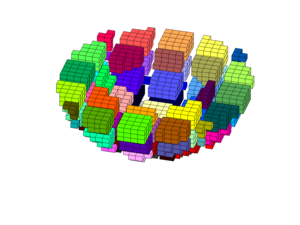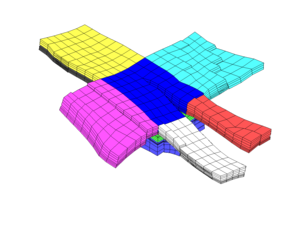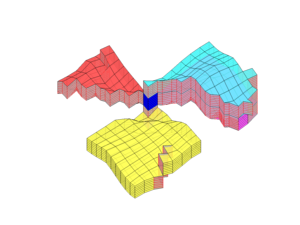|
Grid Coarsening
The module implements functionality for generating coarse partitions and turning these into MRST grids.
Tutorials
DescriptionIn MRST, a coarse grid always refers to a grid that is defined as a partition of another grid, which is referred to as the 'fine' grid. The List of the main functions offered by the module:
In addition, the module offers a number of utility routines the operate on partitions or the coarse-grid structure
Literature
|
|||||||||||||||||||||







